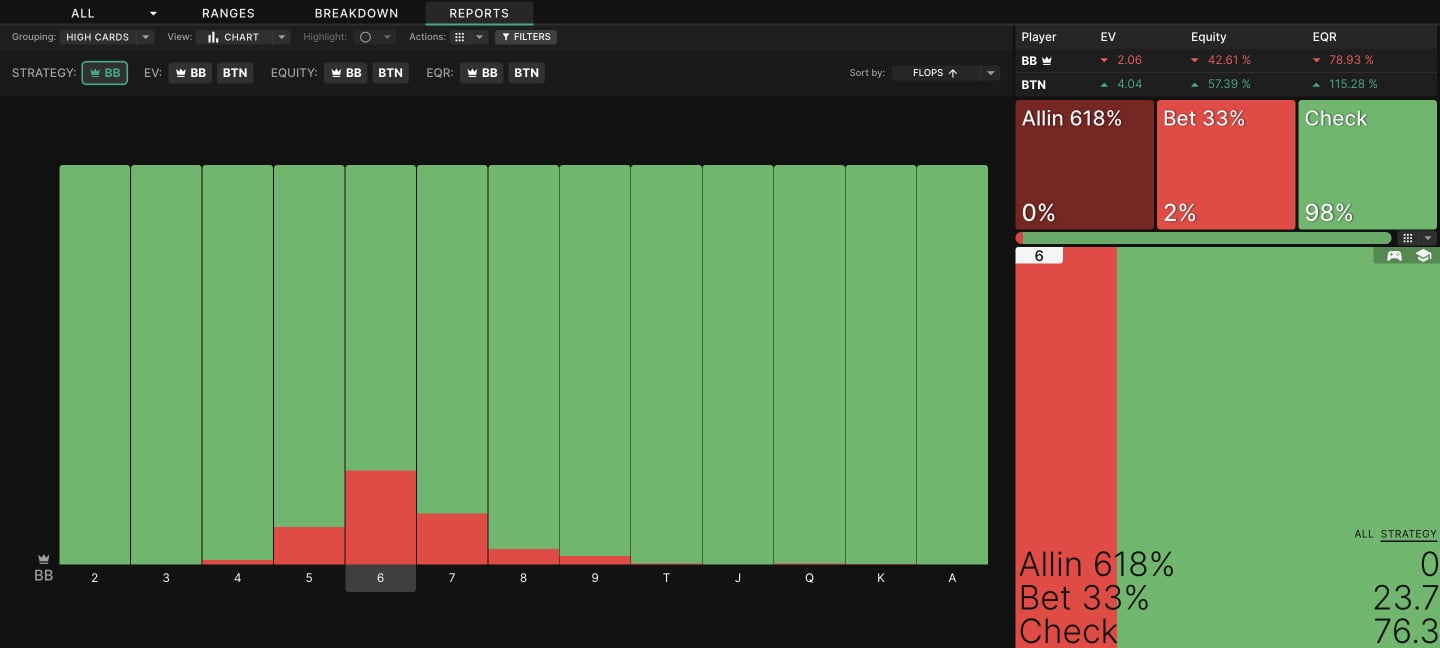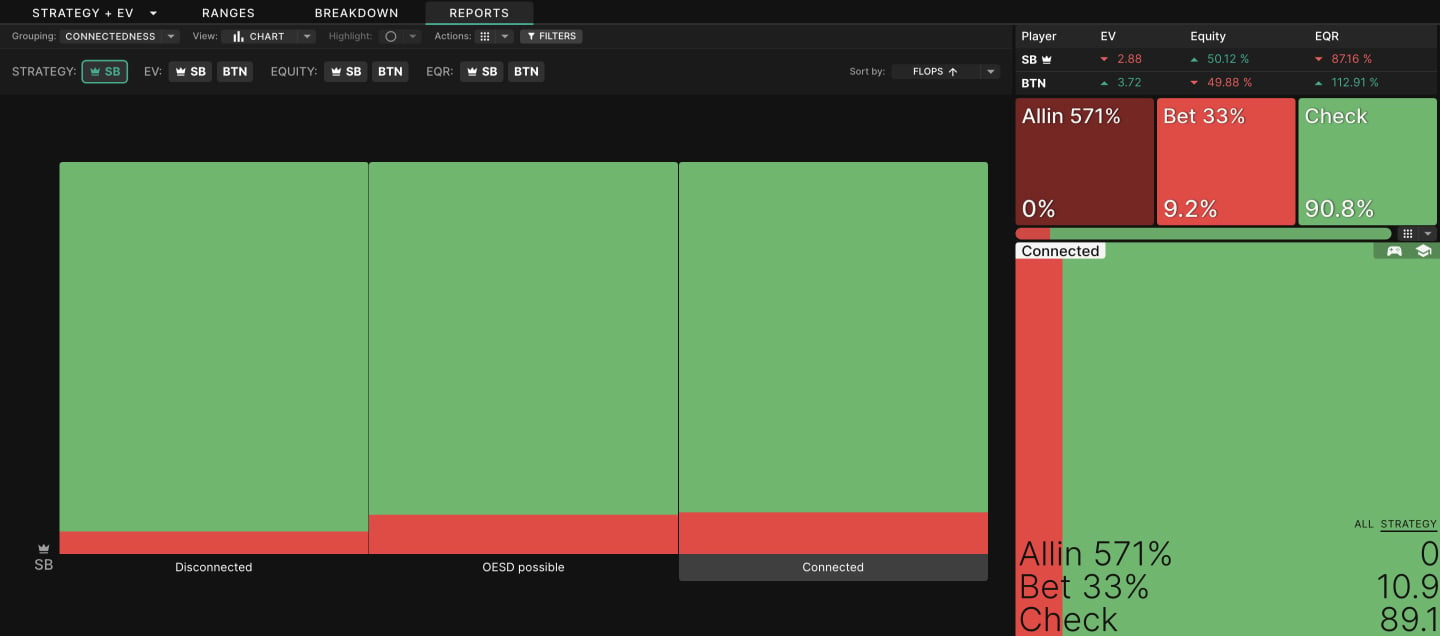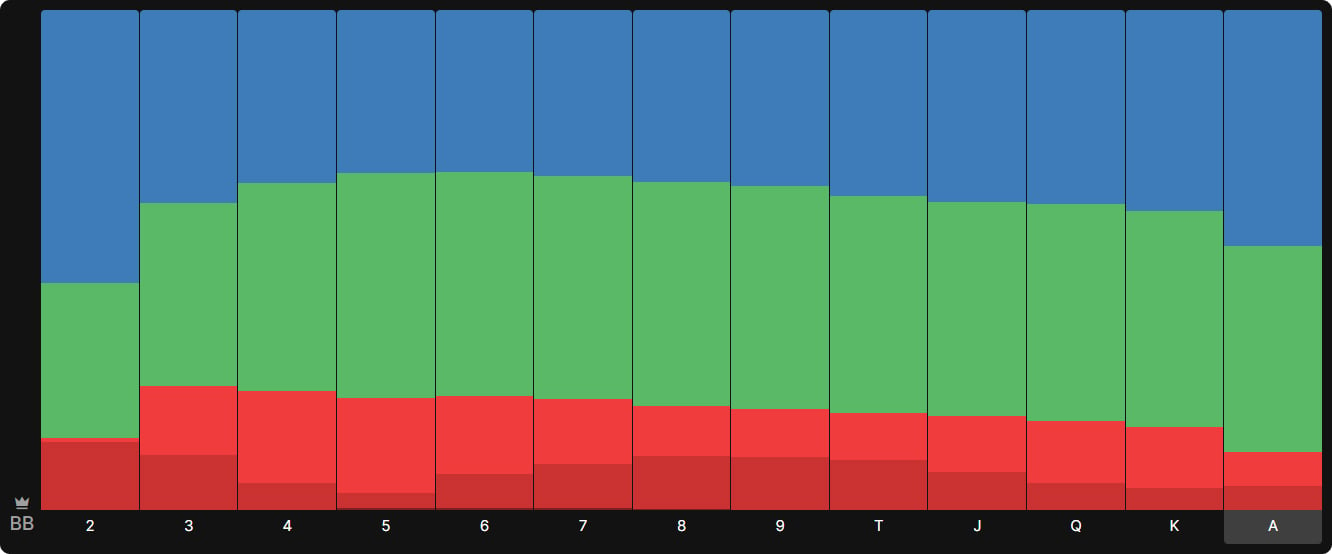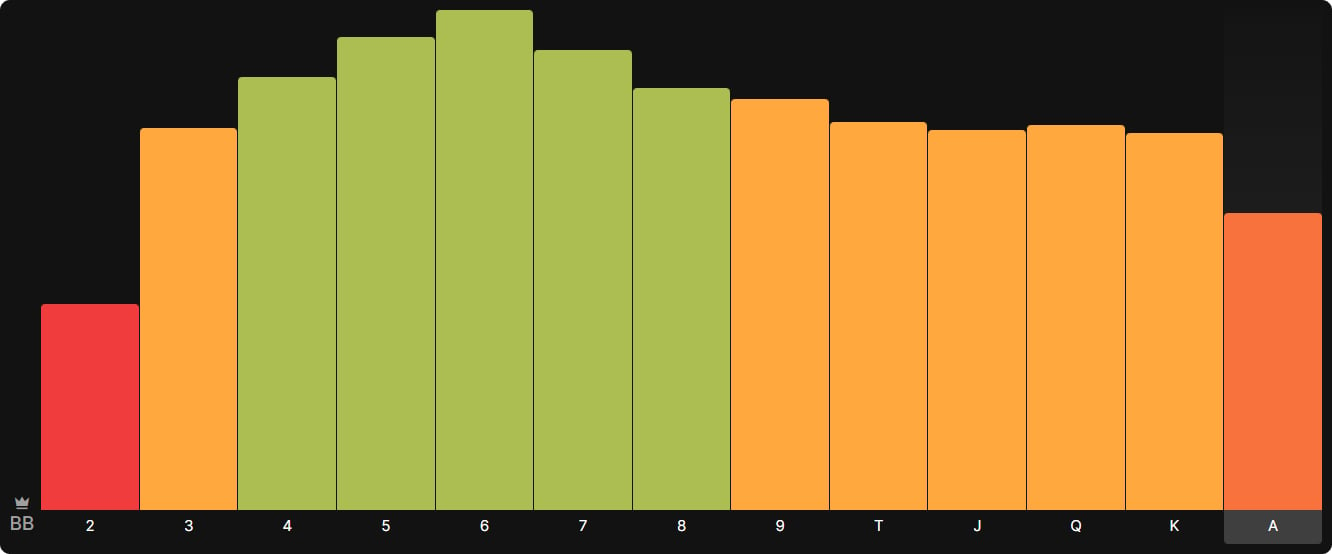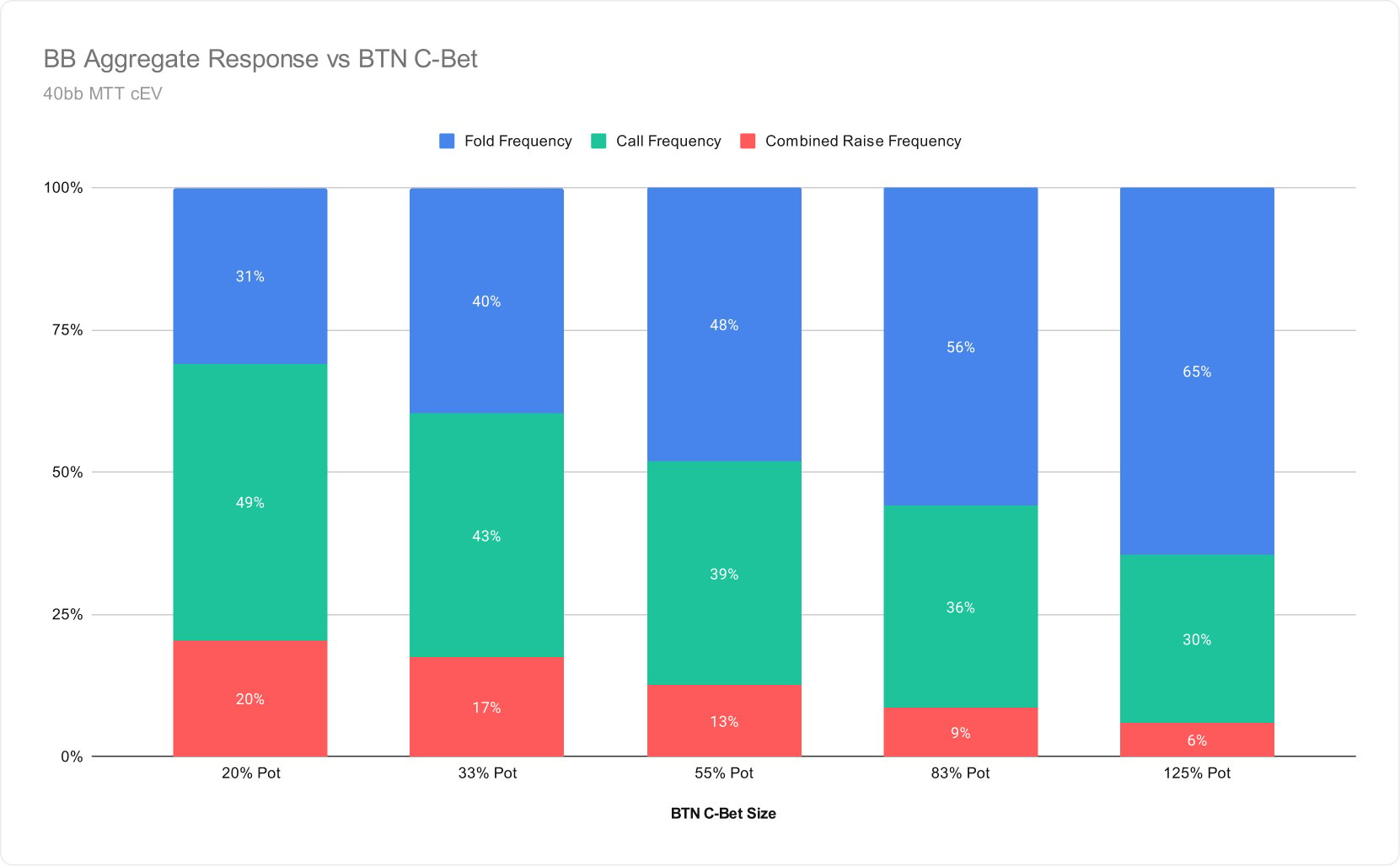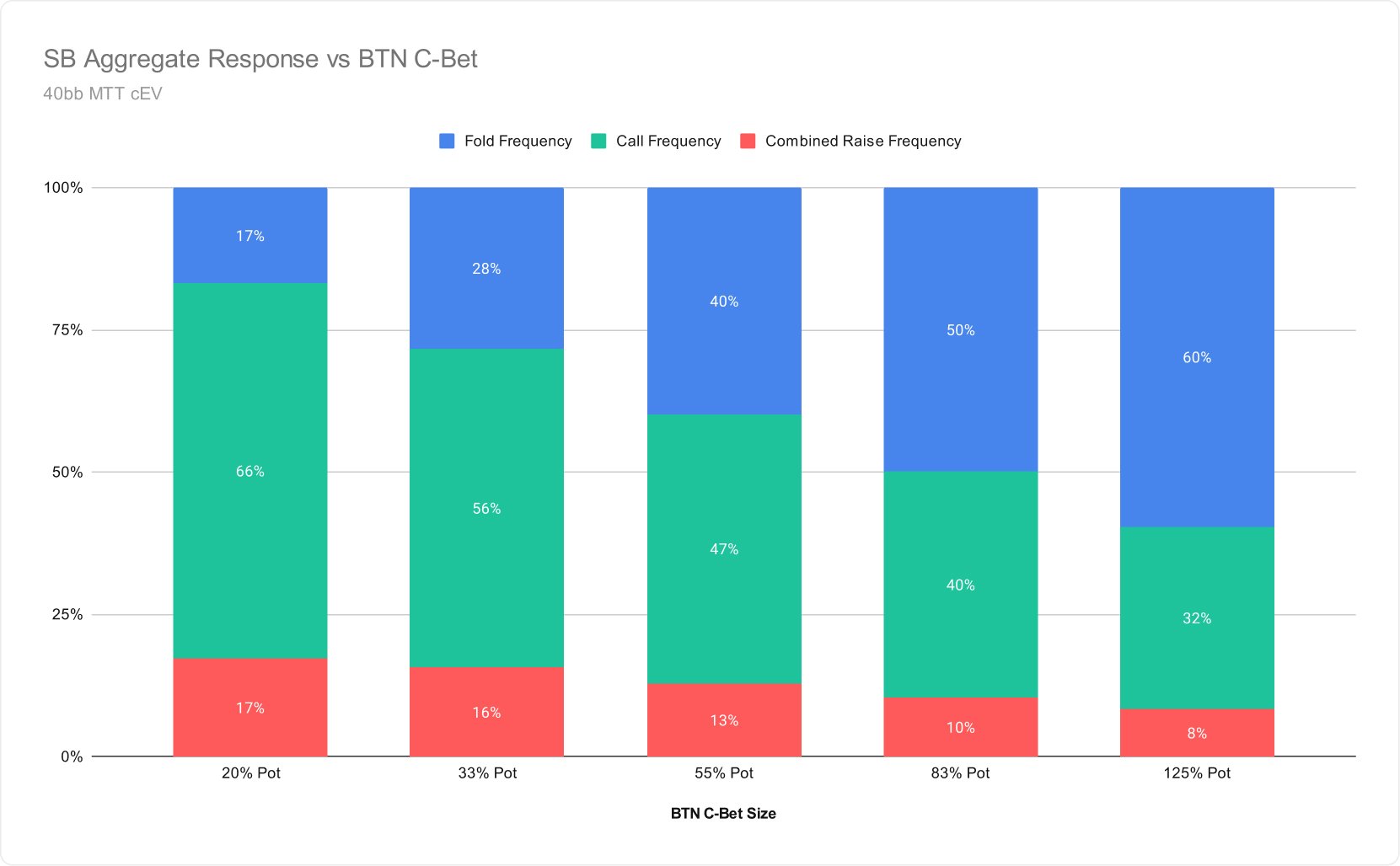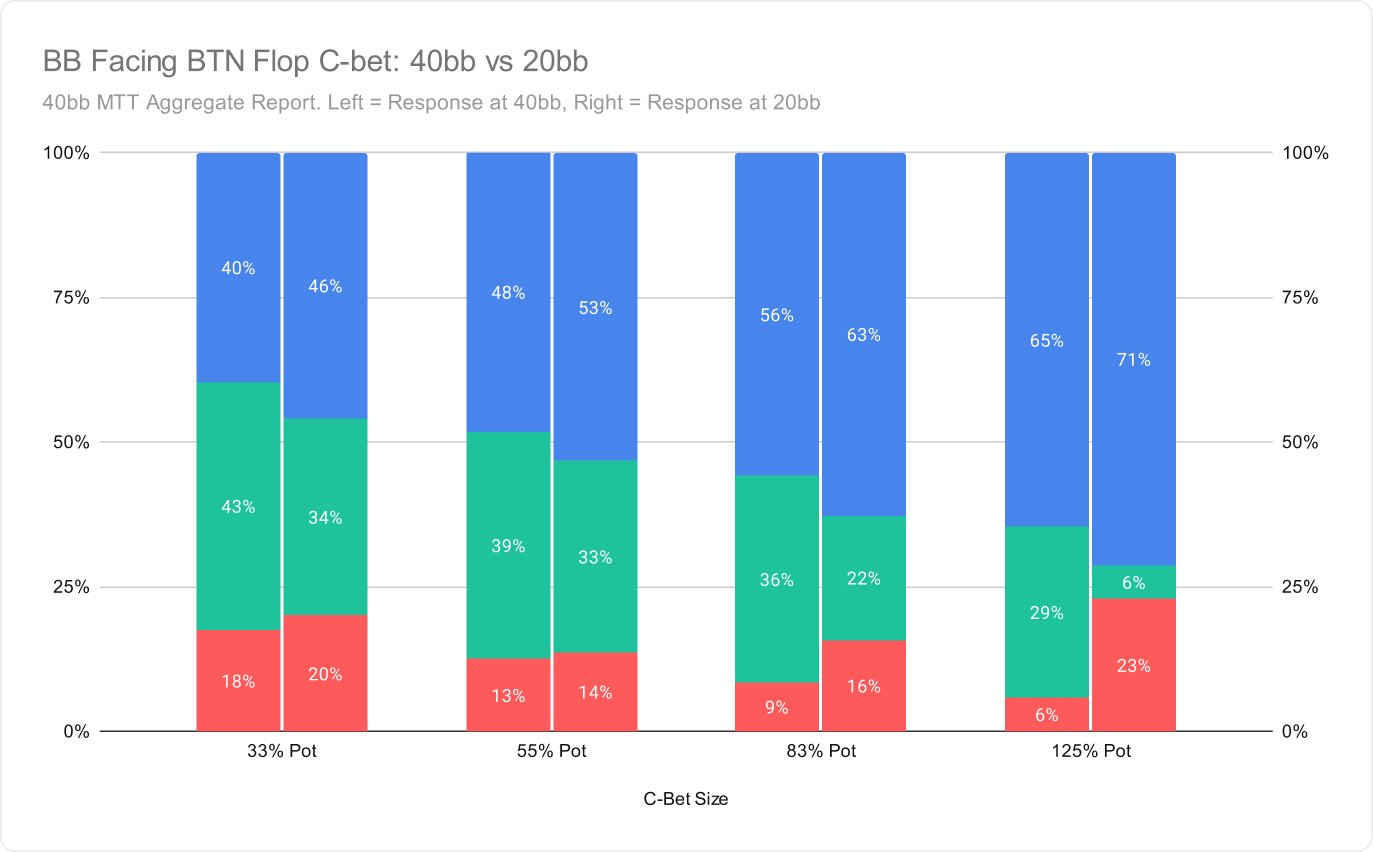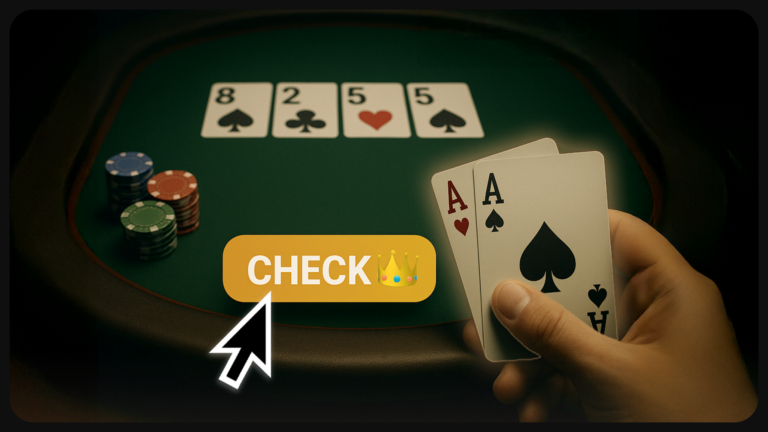Flop Heuristics for Defending the Blinds in MTTs

The field of Game Theoretically Optimal poker is extensive, and thus, to simplify our strategy, we frequently rely on heuristics or “rules of thumb.” In this article, we will utilize GTO Wizard’s aggregate reports to create heuristics that aid our defense of the blinds in tournaments.
Donk Betting
Donk betting refers to a bet from an out-of-position player who was not the aggressor on the previous street. For example, a player in the BB who calls a raise from the BTN preflop then leads the flop is donk betting. So is a player who checks and calls a flop bet and then bets the turn. Had the flop checked through, an out-of-position player betting the turn would not be donk betting, because there was no aggressor on the previous street.
Donk betting acquired its pejorative name long before the advent of solvers or the rigorous application of game theory to poker. Even in those dark days, smart poker players understood that it was generally correct to “check to the raiser”. Now, we can prove it with the help of GTO Wizard’s aggregate flop reports! Here’s a 40bb BN vs BB MTT scenario.
The solver’s average donk betting frequency across all flops is 2%. Its donk betting is concentrated almost entirely on connected flops, where a straight is possible. Even there, it donk bets barely 7% of the time:
By getting even more specific, we can see the donk betting occurs mostly on low connected flops (but not 432):
This is not a fluke of stack sizes or position: the BB’s donk betting frequency is lower still against an early position raiser, and it remains minuscule at all stack sizes.
A preflop raiser’s range is much stronger than a BB caller’s.
The reason for this phenomenon is simple: a preflop raiser’s range is much stronger than a BB caller’s. The following chart displays the BB’s donk betting strategy across all flops, ranked by how much equity the BB has on each flop. The boards at the far left are the very best for the BB. Even there, BB barely clears 50% equity. Not coincidentally, most of BB’s donk betting occurs on these few flops where equities run close:
On most flops, BB has less than 45% equity, and on the worst, they have barely 35%. When at such an equity disadvantage, they have little interest in putting more money into the pot than is necessary, so they do their part to keep the pot small by checking. Even on the rare occasion they do have a strong hand, they can count on the BTN having a lot of incentive to bet, at which point the BB can check-raise.
The SB suffers from a similar dynamic. Though their calling range is stronger than the BB’s would be, they are still quite capped after calling preflop. Consequently, they, too, will be at an equity disadvantage on the flop and should mostly check to the raiser:
By utilizing this aggregate data, we can generate a simple heuristic: The Blinds should check to the aggressor on all but the most advantageous flops.
Responding to a Continuation Bet as the Big Blind
We can use GTO Wizard’s interface to examine how BB’s average response facing the 33% pot-sized bet. In this chart, each flop is grouped together by high card. We can observe BB defending less often on broadway flops in general that hit the aggressor’s range:
Using this grouping method, we can also visualize the expected value of different flops:
The BB’s response to a continuation bet depends at least as much on the size of the bet as it does on the board texture. Let’s examine how BTN’s sizing impacts our defense next.
The chart below shows the BB’s average response to continuation bets of various sizes in the 40bb BTN v BB MTT scenario we’ve focused on so far.
A few patterns emerge:
The larger the BTN bets, the more BB folds. That may seem obvious – larger bets offer worse odds and make bluffing a riskier proposition for the BTN–but it contradicts the popular belief that big bets “look bluffy”. In fact, bigger bets should be more polar, consisting of more very strong and very weak hands and fewer thin value/protection bets. This brings us to the second key takeaway…
The larger the BTN bets, the less BB raises. Raising is less effective against a more polar range. The strong hands are happy to continue, while the weak hands don’t lose much when they fold, and fewer hands in the middle will face tough decisions. The BTN’s smaller continuation bet ranges should contain more medium-strength hands, so BB raises them more often.
The larger the BTN bets, the smaller BB raises. A small raise of a small bet offers extremely good pot odds. It also does little to grow the pot. When the BTN bets 20 into a pot of 100, a 33% pot raise would offer calling odds of 46:186, roughly 4:1. BB mostly prefers to raise larger in order to get more fold equity on their bluffs and more money into the pot with their value hands. As the BTN’s bet gets larger, a proportionately smaller raise offers similar odds, and larger raises are no longer required to get stacks in by the river.
Responding to a Continuation Bet as the Small Blind
The same patterns appear in the SB’s response to a BTN continuation bet, as shown in the following chart:
The SB folds somewhat less often to similarly-sized bets because they don’t see the flop with nearly as many weak hands as the BB.
The Big Blind’s preflop calling range is much wider than Small Blind’s because they get a better price and close the action. SB’s calling range tends to be more condensed, containing less trash compared to the BB. Therefore, the SB tends to continue more often facing a flop c-bet.
The SB does not check-raise much more than the BB, however, which might come as a surprise given their stronger range. This is largely because the BTN bets less often into a SB caller than into a BB caller. The BTN’s average continuation betting frequency (regardless of size) against a BB caller is roughly 75%, compared to roughly 50% against a SB caller. Essentially, the BTN compensates for SB’s stronger range (relative to a BB caller) by betting less often in the first place.
Exploitative Responses
In theory, arguments along the lines of “my SB calling range is strong so I get to check-raise more often” or “this is a good flop for me so I get to check-raise more often” are of limited utility because these range disparities ought to be built into the preflop raiser’s continuation betting strategy. That is, they should bet somewhat less often when the caller’s range is stronger. If you suspect someone is not doing this – if you suspect they are betting most or all of their range even when they do not enjoy a large range advantage – the best exploit is usually to raise them more often than a solver would suggest.
If you suspect someone is betting most or all of their range even when they do not enjoy a large range advantage, the best exploit is usually to raise them more often.
The best way to identify such opportunities is to study continuation betting strategy with an eye toward which boards/situations incentivize the preflop raiser to have a lower betting frequency. These are generally the best spots to increase your check-raising exploitatively against a player who bets too often.
Donk betting is most valuable as an exploit against players who do not continuation bet enough (a less common type than those who bet too often). To capitalize on this exploit, look for spots where you would check-raise most aggressively at equilibrium. Against opponents who are less likely to give you the opportunity to check-raise, you have more incentive to take the initiative and bet yourself.
Adapting to Earlier Positions
The details of the above examples are specific to the positions and stack sizes investigated, but it is not difficult to extrapolate to other positions and stack sizes. Against an UTG raiser, BB’s response is remarkably similar to their response to a continuation bet from a BTN raiser.
The following chart compares Big Blind’s defense frequencies facing BTN and UTG C-bets:
Comparing Stack Depths
When examining shorter-stacked play, there is another confounding variable to consider, which is the increased weakness of the BB’s calling range. With 20bb stacks, the BB shoves more of their strongest hands preflop and also calls with hands that were too weak to call with 40bb stacks, when the BTN’s raise was slightly larger and being out of position was a greater liability. Consequently, we see more folds and comparable raising frequency in response to smaller bets. Facing a larger continuation bet, the BB still folds more than at 40bb but also raises more often, since such bets constitute a much larger fraction of the effective stack.
The following table compares Big Blind’s defense frequencies at 40bb and 20bb effective stack depths:
Conclusion
After calling a raise from the blinds, you should almost always check to the preflop raiser, regardless of whether you are in the BB or the SB. The major exceptions are on very specific flops or as an exploit against players who do not bet often enough.
When facing a bet, you should recognize you are at a significant range disadvantage. Unless the bet constitutes a large fraction of the effective stack, your choice is mostly between calling and folding, though you should raise somewhat more often against smaller continuation bets. But beware of the “Jedi mind trick” where you anchor the size of your raise as a multiple of your opponent’s bet. Against a very small bet, it is generally correct to raise a larger percentage of the pot to avoid offering extremely good odds.
Author
Andrew Brokos
Andrew Brokos has been a professional poker player, coach, and author for over 15 years. He co-hosts the Thinking Poker Podcast and is the author of the Play Optimal Poker books, among others.

